

Winter 2024
Lous Martens
PRODUCTORA
Mark Manders
MAMAMA
Ari Marcopoulos
Oksana Pasaiko
Marine Peixoto
De Cleene De Cleene
Inge Meijer
Matthew Harvey
Ola Vasiljeva
Karel Martens
1 / 16
Roma Publications
Nieuwe Herengracht 11a
1011 RK Amsterdam
The Netherlands
www.romapublications.org
info@romapublications.org
Distribution:
www.ideabooks.nl
Prices are subject to change. No rights may be derived from the information found in this brochure.
2 / 16
Lous Martens
Animal Books for Jaap, Zeno, Anna, Julian, Luca &
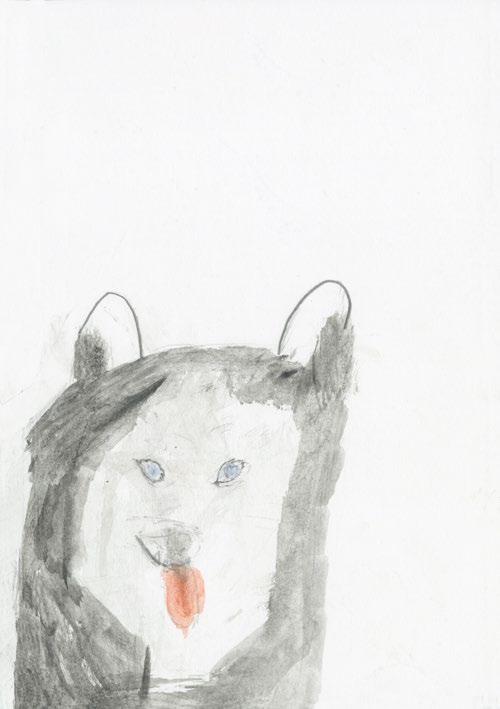
Lous Martens
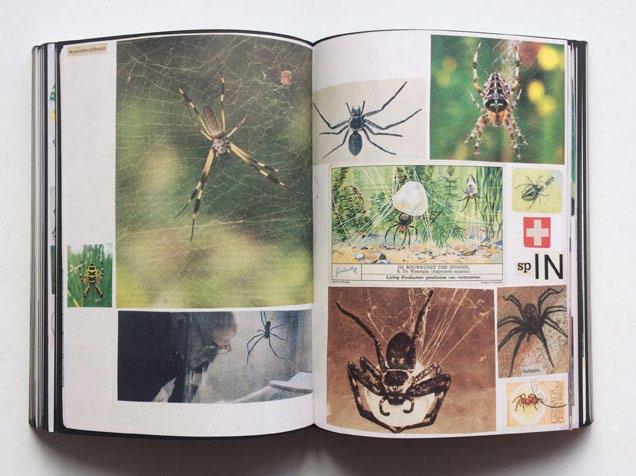
416p, colour
17 × 24 cm, pb, English/Dutch ISBN 9789464460551 Euro 35.00 (incl. 9%VAT)
In warm memory of Lous Martens we present this third edition of her animal books that she made for her grandchildren Jaap, Zeno, Anna, Julian, and Luca. Consisting of loosely pasted pictures of animals that were clipped from newspapers and magazines about art, literature, and science, plus stamps and photographs from advertising brochures, the books are enjoyable for their small, ever-evolving changes as new material is added. Interestingly, the books were never intended to be published, but are now grouped into one big volume, an embodiment of familial love and dedication.
Design: Martens Family

3 / 16
edition)
ROMA 311 (new
Dierenboeken voor/ Animal Books for Jaap, Zeno, Anna, Julian, Luca &
PRODUCTORA
Some Realized Projects
2014—22
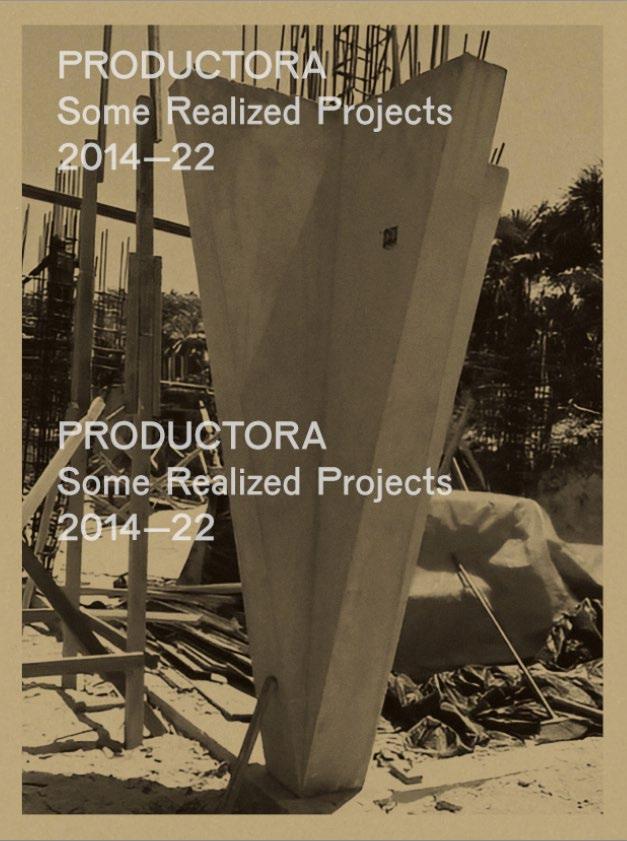
216p, colour
21 × 28 cm, pb, English/Spanish ISBN 978 94 6446 044 5 Euro 40.00 (incl. 9%VAT)
Book with recent work of Mexico City based architectural studio
PRODUCTORA, founded by Abel Perles, Carlos Bedoya, Victor Jaime and Wonne Ickx. In creating buildings that function, delight, stimulate and are likely to withstand tectonic fads as well as telluric shifts, all without ever compromising the restless intellectual curiosity at its heart, PRODUCTORA is the rare architecture studio that can have its cake and eat it too. This book is both a compendium and a promise of this singularity. A survey of the groundwork laid out over a decade, and a presage of what is possible as these foundations continue to be built upon.
Design: Roger Willems



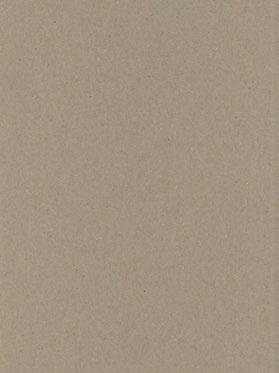
4 / 16
ROMA 456 The project is governed by the aesthetics of the immediate context, which determined height, color, and materials: minimal palette of in situ cast or locally produced materials— including pigmented concrete, timber, clay tiles, and bricks. El proyecto se rige por la estética del contexto inmediato, el cual determinó altura, el color los materiales: una paleta mínima de materiales producidos localmente o preparados vertidos en el sitio, entre los que se incluyeron el hormigón pigmentado, la madera, las baldosas de arcilla los ladrillos. There are stairs meant to take us up; there are sculptural stairs; there are schizophrenic stairs, like those by Piranesi; religious stairs, like those we find in pyramids; stairs meant to become space; monumental stairs; small, mobile, light, symbolic stairs, etc. Even Julio Cortázar once wrote set of “Instructions on how different aspects that come with them and the projects we have designed. Such Community Cultural Center, where the building’s staircase functions as an open forum and link between a series of existing squares consolidating the urban configuration of the site. Also, in our design of the Teopanzolco Auditorium, the ceiling becomes large staircase in the style of the ancient pyramids: works as visual and physical extension of the archaeological site because it goes all the way down to the ground and can be used in its entirety. We decided to organize the Tello House, located on sloping plot, in mid-levels. The staircase, arranged within a doubleheight space, is the very heart of the project. All mid-levels are connected staircase, in turn, works as a kind of a walkway or promenade that, in its rediscover the house’s assorted spaces. Hay escaleras para subir; hay escaleras escultóricas; hay escaleras esquizofrénicas como las de Piranesi. Escaleras religiosas como las de las pirámides; escaleras espacio, escaleras monumentales; escaleras pequeñas, móviles, ligeras, escaleras simbólicas, etc. Incluso Julio Cortázar alguna vez escribió “Instrucciones para subir una escalera” que se detonan través de éstas de su uso. En algunos de los proyectos que hemos protagónico. Tal es el caso del Centro como foro abierto conector entre una serie de plazas existentes consolidando la configuración urbana del sitio. En el Auditorio de Teopanzolco que diseñamos, el techo se convierte en una gran escalinata la usanza de las antiguas pirámides; funciona como extensión visual física de la zona arqueológica porque desciende hasta el piso puede ser ocupado en su totalidad. la Casa Tello, ubicada en un terreno inclinado, decidimos organizarla en medios niveles. La escalera dispuesta en un espacio de dos alturas media se vuelve el corazón del proyecto. Todos los medios niveles se zigzag. La escalera, su vez, funciona como los usuarios; se convierte en un paseo o disfrutar redescubrir los distintos espacios
Mark Manders
House with All Existing Words. An exhibition in Juliaan Lampens’s Woning Van Wassenhove
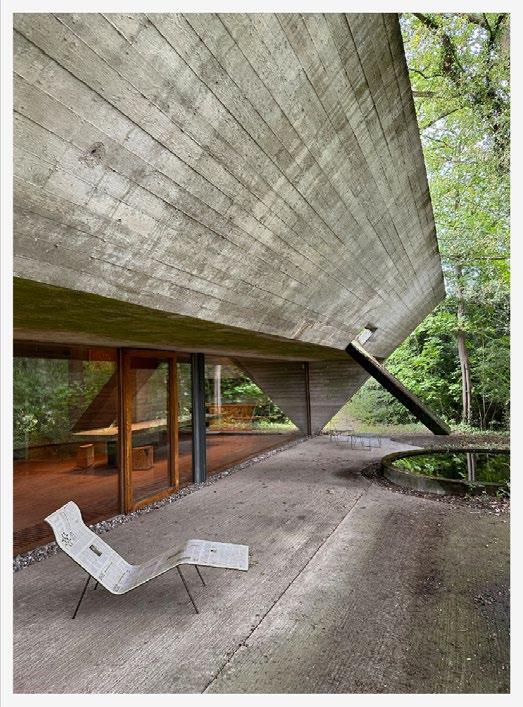
64p, colour
20 × 27 cm, pb, English/Dutch ISBN 9789464460490 Euro 20.00 (incl. 9%VAT)
Mark Manders installed an exhibition in the Woning Van Wassenhove, a post-Brutalist house designed by Juliaan Lampens in 1974. Although Manders hardly touched some spaces, he treats the bed, office, and kitchen as stages for aggregation in line with the original occupant’s mindset: drawings, architectural proposals, photographs, artworks, paint pots, and seemingly wet clay are piled on top of one another. In Manders’ words: “The aim is to show the house in a perfect situation. While some spaces derail when you zoom in on them, there is a kaleidoscopic element to it, as if you are looking inside a head.”
Design: Roger Willems
5 / 16
ROMA 457
MAMAMA
Martens Manders
Marcopoulos Tokyo Art Book Fair 2023
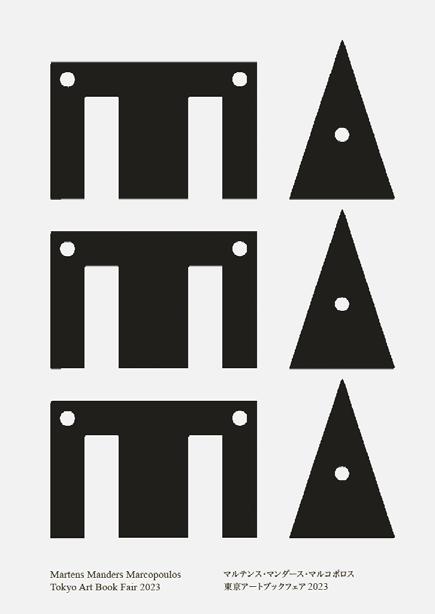
32 p, bw/colour 17 × 24 cm, pb, English/Japanese no ISBN Euro 12.00 (incl. 9%VAT)
Photos made by Ari Marcopoulos in the studio of Mark Manders, printed on left-over sheets from Karel Martens’ Small Prints. Published on the occasion of the Tokyo Art Book Fair 2023.
Design: Roger Willems (cover image by Karel Martens)
Limited edition: 650 copies
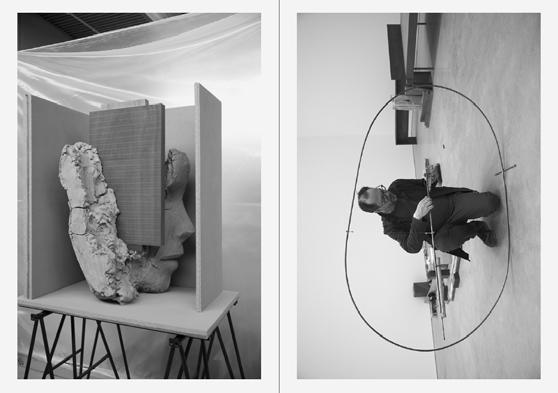

6 / 16
ROMA 458
Ari Marcopoulos
Butter
48 p, colour
15.5 × 21.5 cm, pb, English
ISBN 9789464460506
Euro 19.00 (incl. 9%VAT)

In October elite snowboarders from all over the world come to Saas Fee, Switzerland, to start their winter season at a high altitude snow park with big jumps and a large halfpipe. While Marcopoulos was there to make a video with American Olympian Lucas Foster, he met and photographed other riders like Japanese Olympic gold medallist Ayumu Hirano, his brother Kaishu, famed for performing the highest air ever in competition, and the Korean Chaeun Lee, who later in the season become world champion halfpipe at age 16. The video and this book are both titled Butter ; a word the riders use when a trick is performed smoothly with a lot of personal style.
Design: Ari Marcopoulos, Roger Willems Limited edition: 750 copies
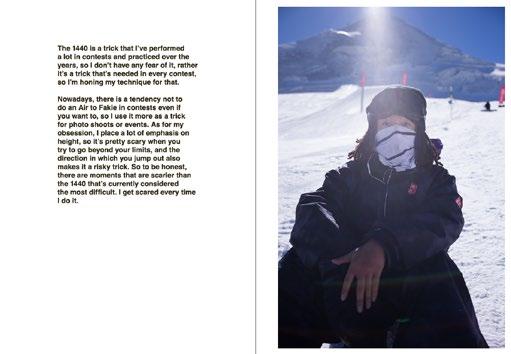

7 / 16
ROMA 459
Oksana Pasaiko
Collected Poems
24 p, colour
17 × 24 cm, pb, English ISBN 978 94 6446 054 4 Euro 14.00 (incl. 9%VAT)









By meticulously fixing human hair in lines onto pieces of hand soap, Oksana Pasaiko created a collection of Short Sad Texts (Based on the Borders of Countries). The project comprises both a present and an absent version. The sculpture that is present is a block of soap on which hairs have been meticulously laid in the form of various contested borders. The artist, The artist draws particular attention to the fact that the borders presented in this book did not arise from natural features such as rivers, mountains, seas, or lakes, but from human conflicts.
Design: Roger Willems








8 / 16
ROMA 460
Marine Peixoto
Bercy Street Workout
Photographies 2020-2023


88 p, duotone
23 × 28 cm, hb, French/English ISBN 978 94 6446 056 8 Euro 29.00 (incl. 9%VAT)
Marine Peixoto, winner of the Le Bal/ ADAGP Award for Young Creation 23, worked on a sport court near Bercy in Paris, where young adults are coming freely to do workouts. Gathering several times per week, they started to develop their own dynamic with the will of becoming someone else by the transformation of the body. During 2 years, Peixoto followed them, practiced with them, almost became of them. In a sharp black and white, she alternates portraits, frontal views of the practice field, details of the workout material but also moments of gathering.
Design: Roger Willems


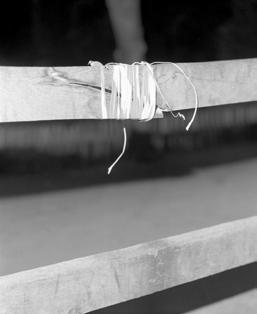
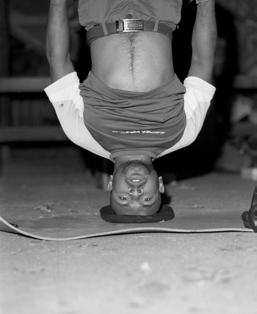
9 / 16
ROMA 461
Le Bal Roma
25 24
Marine Peixoto
BERCY
Michiel De Cleene and Arnout De Cleene
Amidst the fire, I am not burnt




160 p, colour 24 × 30.5 cm, pb, English ISBN 9789464460520 Euro 35.00 (incl. 9%VAT)
In April 1872, Vesuvius erupted in a violent cataclysm. It is considered to be the first volcanic eruption ever photographed. Major eruptions have followed since, with the next eruption dangerously looming. Each eruption leads to the next cataclysm, each period of quiescence to forgetfulness and complacency. Amidst the fire, I am not burnt is a surface reading of the iconic landscape shaped by Vesuvius. It researches the different temporalities, scientific and popular approaches, historic and presentday photographic representations, and stories inscribed in this cyclical landscape.
Design: De Cleene De Cleene, Roger Willems
10 / 16
ROMA 462
Inge Meijer
The MoMA Plant Collection
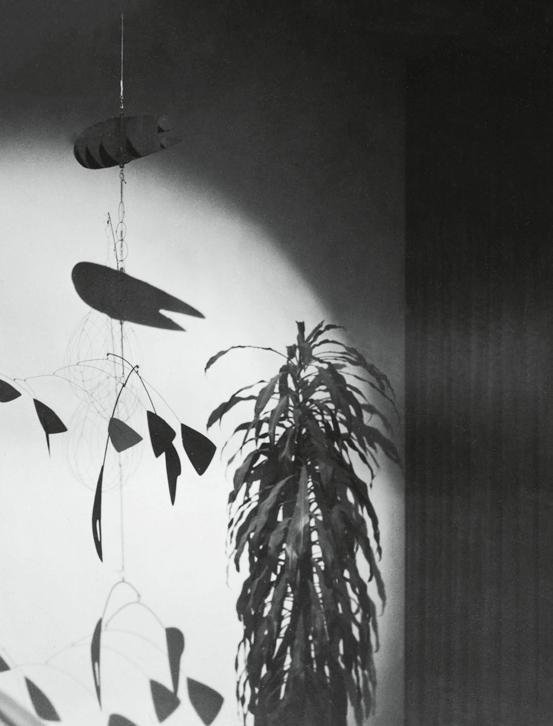
Inge Meijer
The MoMA Plant Collection




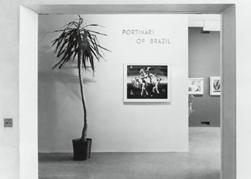
112 p, bw
29.7 × 21 cm, pb, English
ISBN 9789464460537
Euro 32.00 (incl. 9%VAT)
After Meijer’s first artist’s book The Plant Collection (ROMA, 2019), about plants in the Stedelijk Museum in Amsterdam, The MoMA Plant Collection includes 340 photographs and drawings of exhibitions at the New York institution, in which plants feature among the works. Inge Meijer wants to render museum plants visible once again, to make us aware of their real as well as metaphorical importance. Beyond her desire for institutional critique, she is also part of a new moment in the relationship between nature and culture.
Design: Roger Willems
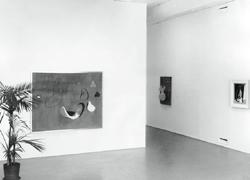







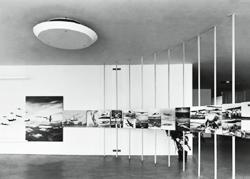
11 / 16 1942 Tchelitchew: Paintings and 1943 Airways to Peace 1942 New Acquisitions and Extended Loans: Cubist and Abstract Art
ROMA 463
Why one image and not the other? A few years ago, when asked to choose an illustration for an essay about Henri Cartier-Bresson’s first retrospective at the Museum of Modern Art (MoMA) in New York in 1947 opted for a view of an installation in which a potted plant figures prominently among the photographs hanging on the wall (see page ). still wonder why chose that particular image. At the time, was working for the Musée National d’Art Moderne at the Centre Pompidou in Paris. may have had an unconscious inclination to gently mock the great New York rival by choosing this slightly outdated scenography in which a plant occupies as much (if not more) space than any of the works on the wall. Naturally, had no idea at the time that would be working for the museum on rd Street few years later. Beyond any malice, I was, I think, mostly surprised by the dialectical opposition presented by the image – between the rare and the common, culture and nature, and art and ornamentation. One of the great revolutions of modernity, particularly in architecture, was to banish the ornamental principle. And here was the temple of modernism once again embracing, in a perfectly uninhibited manner, these plants, whose leafy outgrowths had inspired so many decorative motifs. How could Monstera deliciosa also called Swiss cheese plant, and a Piet Mondrian painting coexist in the same space? Or with the chiseled geometry of Henri CartierBresson’s photographs? Was this perhaps particularly interesting return of the repressed? When I first came across Inge Meijer’s artist’s book The Plant Collection published by Roma Publications in 2019 was happy to see that wasn’t alone in wondering about the presence of indoor plants in museum rooms. With the precision of scientific publication, the book lists almost 300 photographs of installations taken at the Stedelijk Museum in Amsterdam between 1945 and 1983 in which various plants appear alongside works of art: Aucuba japonica Cissus antarctica Codiaeum variegatum Cyperus papyrus Dracaena fragrans Euphorbia ingens Grevillea robusta Olea europaea Philodendron bipinnatifidum and a few more. At the time, the artist was already preparing the second part of her project, on MoMA, for which I then worked. Today I’m looking at the mock-up of this second volume. The MoMA Plant Collection includes over 400 photographs of exhibitions at the New York institution, in which plants feature among the works. The first image in the book after the cover documents the installation Photography 1839-1937 This was the first major historical exhibition dedicated to photography in a museum of modern art. Curiously, it’s not a plant, but the shadow cast by its foliage that appears in the image. This is striking detail, given that the principle of the camera obscura was discovered by observing the image of the sun forming through the leaves of a tree in a shady undergrowth, or given the influence that this inaugural exhibition organized Clément Chéroux Culture Slash Nature, a Reversal of Priorities Clément Chéroux, Henri Cartier-Bresson Paris, Centre Pompidou, Amsterdam, Roma
The MoMA Plant Collection Inge Meijer Roma
Ari Marcopoulos BEWARE
320 p, bw & colour 22 × 16 cm, pb, English ISBN 9789464460575 Euro 25.00 (incl. 9%VAT)

Beware, be aware. Be.
Curbs, bumps, transitions, rails, steps.
Collage, remix.
This book is a new look at photographs from the time Marcopoulos shot Brown Bag, a short super-8 film of skateboarders in New York in 1993. The film, photographs from that time, plus a small selection of recent work, appear in this book, and as a large collage in the exhibition BEWARE at the Musée Art Moderne de Paris (April 5–August 25 2024).
Design: Ari Marcopoulos, Roger Willems

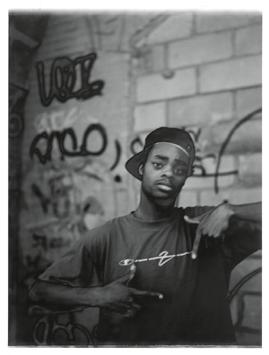
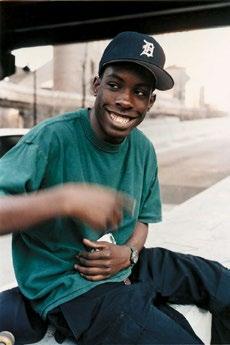
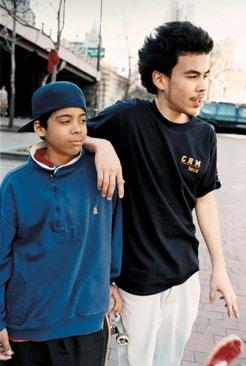
12 / 16
ROMA 464 208 124
Roma
Ari Marcopoulos
BEWARE
Ola Vasiljeva
Ghost Town
340 p, colour 17 × 24 cm, pb, English ISBN 9789464460513 price not set yet
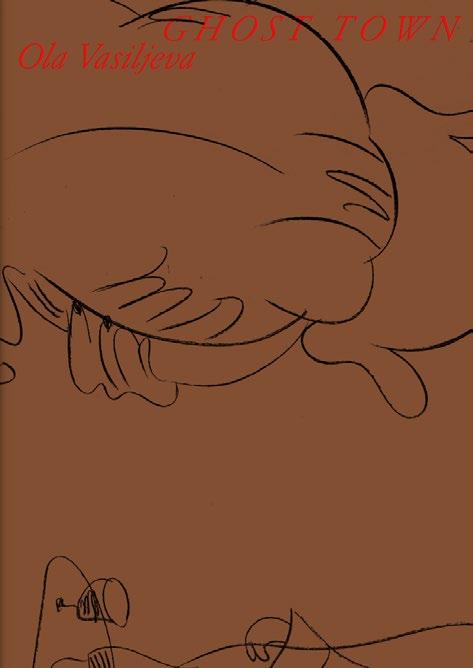
This first comprehensive overview of Ola Vasiljeva’s practice between 2008 and 2023 consists of three intertwined sections: A section with exhibitions, a section with projects by the Oceans Academy of Arts (OAOA, an art collective founded by Vasiljeva in 2008), and a ‘storage’ section. This part of the book is a cross between an index, an archive and a collection, and it reproduces some of the separate elements that have been featured in Vasiljeva’s multifaceted projects over the years. With text contributions by Chris Fitzpatrick, Roos Gortzak, Anna Gritz and Kate Strain.
Design: Robert Milne

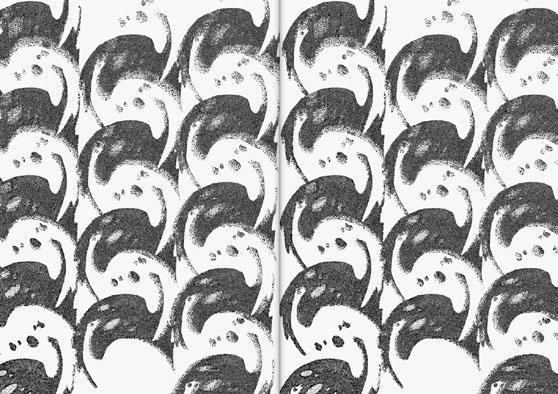
13 / 16
ROMA 465
Matthew Harvey Future Estate
240 p, colour 24 × 17 cm, hb, English/Chinese/Spanish ISBN not set yet price not set yet
Future Estate by Matthew Harvey is a long term artistic research project documenting the spatial and organisational processes of commodity production, the geopolitics of development, and the zoning practices, extractions, and transnational investments that shape the material and social environments where uneven processes of global labour and distribution play out. In its attempt to navigate a possible set of coordinates that ‘follows the flow’ of production networks and infrastructural throughlines, the photographs move between sacred and transcendental moments at the margins, exposing some small part of the subtle violence, awe and spiritual trouble of being alive in the present.
Design: Roger Willems
14 / 16
ROMA 466
Matthew Harvey, Future Estate
Karel Martens
Calendar 2024 / Every day is a new day

736 p, colour
15 x 21 cm, pb, English
ISBN 9789464460582
Euro 30.00 (incl. 21%VAT)
A tear-off calendar for 2025 by Dutch graphic designer Karel Martens. For each day of the year, Martens has created a unique arrangement, originally constructed using his signature method of printing letterpress monoprints from found metal forms, and then digitized to comprise 365 compositions in total. Every day is a new day!
Design: Karel Martens
15 / 16
ROMA 472
Upcoming:
Marc Nagtzaam & Stephan Keppel
Marijn van Kreij
Henri Jacobs
Philippe Van Wolputte
Krijn Giezen
Joan Ayrton
Bart Lodewijks
Stanley Wolukau-Wanambwa
Batia Suter
Kees Goudzwaard
byob
among others
16 / 16




































































